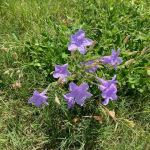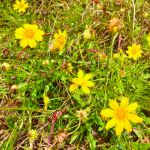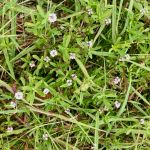Master Gardeners: Yes, landscape weeds can be controlled
Published 8:15 am Sunday, August 3, 2025




Hey man, got some weed(s)? Does this question make you think of a Cheech and Chong movie? Well, today’s article is about lawn weeds.
A weed is a plant that you do not want growing in your yard or in your flower beds. It could be a perfectly fine plant like a zinnia. Zinnias are pretty and prolific. However, you might not want them growing in your vegetable garden.
The trouble with weeds like the Tribbles from Star Trek, they can be aggressive. They can overtake the desired plants you purchased and planted in your flower bed. Weeds can use your valuable water and the nutrients you allocated for your landscape.
Trending
How do you know if a plant is a weed? The questions are: did you plant it?
And do you like it? If the answer is no, it is a weed.
Sometimes, critters like birds and squirrels take part in our landscaping. You may approve because you like the plant. You may like the “free” plant but it may grow somewhere you do not want it to grow. For example, I have had Anaqua tree saplings grow in my flower beds. Ugh.
There are new apps that you can download on your phone or computer to identify these newcomers in your garden. If you do your research, you can decide if this new plant stays or goes.
Due to our extended growing season in the Crossroads area, we have an abundance of weeds. Some you will easily recognize like clover, crabgrass, dandelions, nut grass, poison ivy, primrose, purslane, thistle and wild onion. And there are numerous other plants that some consider weeds and others label as plants.
Now think about the appearance of your landscape. Are you comfortable with a loose and natural appearance or do you find a more formal style more appealing? Be honest. How much time and effort do you want to spend to maintain the “look” you most value?
Trending
Yes, weeds can be ugly. On the other hand, certain weeds can be beautiful.
Consider coreopsis, chickweed or Queen Ann’s Lace. Do they contribute beauty to your landscape? Of course, it is your decision.
The next step is how to control these plants. Of course, you can try pulling them out. My choice is laying down landscape fabric prior to planting. Wood mulch like cypress that stays in place is popular. Its natural color looks great with all plants and it is effective in minimizing weeds. Avoid using dyed mulch because the color leeches into the soil when watered and the sun fades it. Do not use rubber mulch or stones. I recommend you only use natural materials in your landscape.
Also, be sure to investigate the use of herbicides, both the chemical and natural methods. Some people are fond of the yellow color that is produced by Glyphosate. Do note that this product has resulted in class action lawsuits against the company that makes and sells it. The main ingredient is a probable human carcinogen.
Seriously, do your research. Some chemicals are toxic to humans. When applying herbicides, take proper safety precautions. Wear gloves, long pants, long-sleeve shirts, goggles and masks.
Do not overuse chemicals that can pollute waterways. Also, some chemicals can harm beneficial insects like bees and butterflies. They can contaminate food producing plants like fruits, grains and vegetables.
Above all, read labels and strictly adhere to the directions. Be well informed before using chemicals and other herbicides.
If the preceding paragraph got your attention, GOOD! Do consider using non- toxic alternatives to eliminate weeds. Natural, common household products like salt, vinegar, baking soda or even lemon peels are easily available and inexpensive.
Yes, landscape weeds can be controlled. In conclusion, we have only one Earth. Let’s take care of it with earth-friendly products and efforts.










